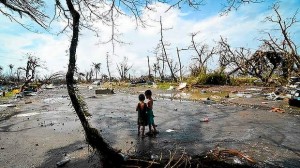Climate change to drive migration
 Climate change will emerge as the largest driver of human displacement and migration, according to a new report.
Climate change will emerge as the largest driver of human displacement and migration, according to a new report.
The paper ‘Climate Change and Migration Dynamics’, published by the US-based Migration Policy Institute (MPI), has identified sea-level rise, higher temperatures, disruption of water-cycles and the increasing severity of storms as specific emerging factors behind population movement.
The report cites studies that say sea levels will rise between 17 and 29 centimetres in the next 40 years – affecting countries with high-density populations and the most productive agricultural land in low-lying coastal areas; as well as 16 of the world’s 22 largest cities.
It cites another report that says “a small rise in temperature could seriously reduce crop production in a number of countries where many people already live near the edge of viability”.
It says international cooperation is essential for a successful response to climate change and its effects on human displacement.
“Three levels of response are needed: short-term responses to sudden-onset disasters come in forms of humanitarian assistance; in the medium term, global efforts should focus on building resilience through adaptation; and the long-term response should be the purposeful mitigation of global warming in an attempt to bend back the curve of climate change,” the report says.
Report author and MPI Director Kathleen Newland said little progress has been made on these mid and long-range tasks.
“Both technical and financial support from the industrialised states for adaptations in the most vulnerable countries is urgently needed, and it does not need to wait for new scientific breakthroughs,” Ms Newland said.
“Many near-term manifestations of climate change will look very much like the consequences of longstanding human abuse of land and water resources.
“The measures that can be taken to preserve or restore rural livelihoods or natural amenities that support large urban areas are the same measures that will reduce vulnerability and promote resilience and adaptation in the face of climate change,” she said.
Ms Newman said other complex factors along with climate change would influence how migration would occur in response to environmental changes.
“A combination of exposure to natural hazards, poverty-related vulnerability and resilience determine which regions and societies are most likely to suffer negative effects of climate change,” she said.
“Family and community networks, historical ties, proximity and ease of access all help to determine where people will go if they feel compelled to move,” Ms Newland said.












